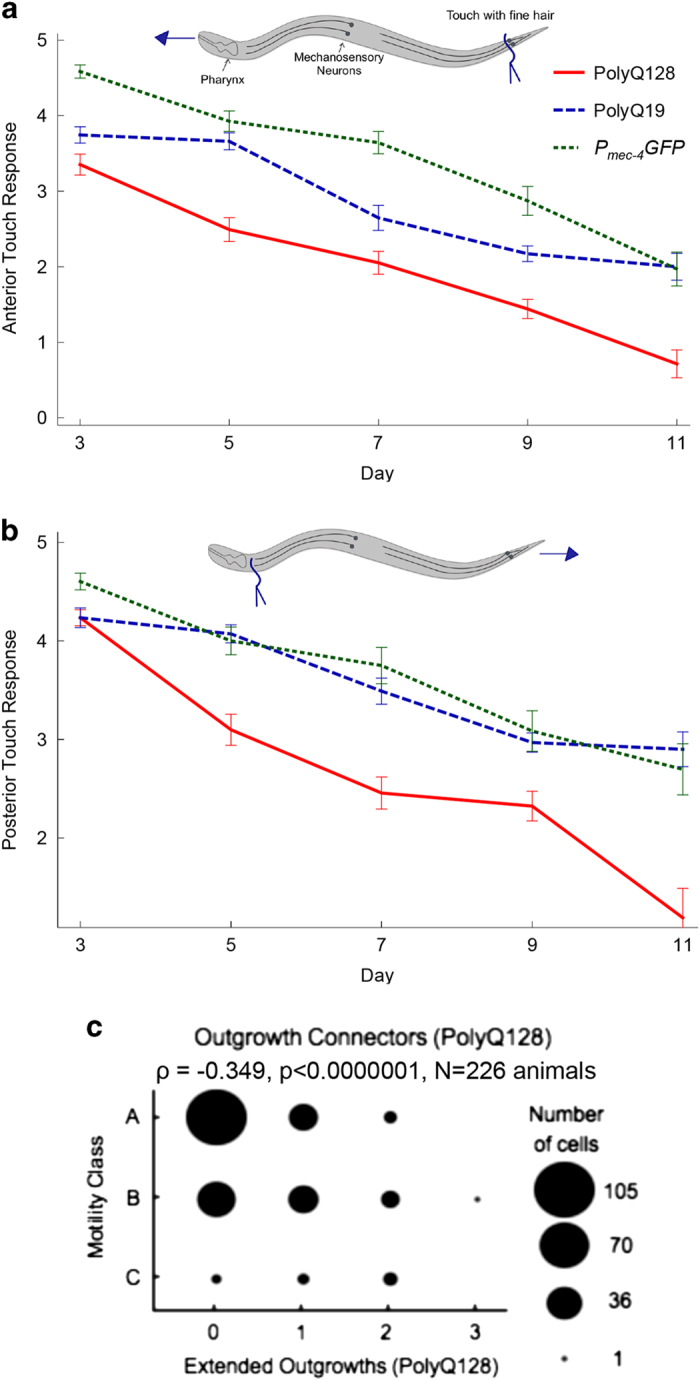Figure 3.

Gentle touch response across the lifespan in Pmec-4GFP, polyQ19 and polyQ128 animals. Animals were grown at 25 °C and tested for gentle-touch response on the indicated days. Anterior (a) and posterior (b) gentle-touch response during adulthood in Pmec-4GFP, polyQ19 and poly128 animals measured on a scale of number of responses to 5 tests of gently provoking animals on the tail or head with an eyelash. The analysis was run on three independent trials and a compilation of observations per time point is presented to obtain each N. Each bar represents mean±s.e. There was a statistically significant decrease in both anterior and posterior touch response in every strain (N=P<0.0001, Wald test). No differences in slope were detected among strains with the exception of anterior touch response polyQ19 versus polyQ0 (P=0.02). Anterior: polyQ0 N=65 (d3), 68 (d5), 56 (d7), 47 (d9), 33 (day11); polyQ19 N=51 (d3), 56 (d5), 51 (d7), 64 (d9), 33(d11); polyQ128 N=68 (d3), 61 (d5), 57 (d7), 68 (d9), 21 (d11). Posterior: polyQ0 N=73 (d3), 71 (d5), 56 (d7), 47 (d9), 33 d11); polyQ19 N=51 (d3), 56 (d5), 51 (d7), 64 (d9), 20 (d11); polyQ128 N=68 (d3), 61 (d5), 57 (d7), 68 (d9), 21 (d11). (c) Spearman correlation plot: extended outgrowths in polyQ128 animals versus mobility. Youthful animals move spontaneously (Class A) and progressively decline as they age, requiring gentle prodding to move (Class B), or barely move at all even after prodding (Class C).20 (N=226, ρ=−0.349, P<0.001). d, day; GFP, green fluorescent protein; PolyQ, polyglutamine.
